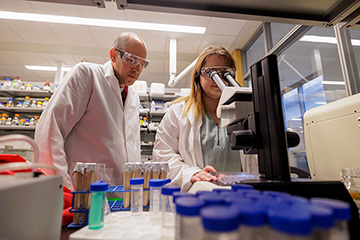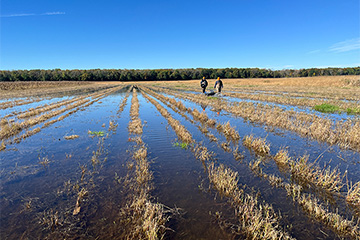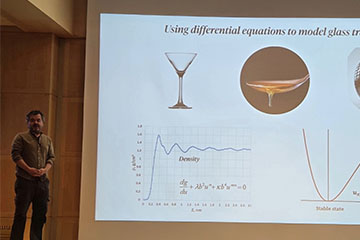CMU Faculty Develop Carbon Dioxide Tracking Method
Geography and Environmental Studies faculty member's research to help scientists understand how carbon dioxide travels around the atmosphere
Tao Zheng, a faculty member in the Department of Geography and Environmental Studies at Central Michigan University, is developing a method for tracking carbon dioxide emissions. Carbon dioxide is a greenhouse gas that traps heat in the Earth’s atmosphere, creating a livable temperature. However, an excess of greenhouse gases can have negative effects on the environment, such as climate change and global warming.
Dr. Zheng received a grant from NASA to investigate the man-made and naturally occurring sources of carbon dioxide over North and South America. To efficiently track carbon emissions, he is using an atmospheric modeling system and satellite observations. The atmospheric modeling system is a set of complex computer codes that simulate the governing physics of certain atmospheric processes, such as radiation. The satellite observations provide information on the amount of carbon dioxide in the atmosphere, while the atmospheric modeling system links the carbon dioxide to their sources.
The project is in the initial stages but is expected to be completed in three years. The findings from this research will be combined using sophisticated numerical methods and will provide scientific support for implementing carbon emission regulations aimed at reducing climate change.
According to Dr. Zheng, “The project has been developing a global carbon dioxide inverse modeling system based on National Center for Atmospheric Research’s latest atmospheric model MPAS (Model Predictions Across Scales). The newly developed system will enable high-resolution CO2 flux estimation at high resolution using multiple sources of CO2 observations, including NASA’s OCO-2/3 satellites and airborne and tower measurements.”
Matthew Liesch, faculty member and Chair of the Department of Geography and Environmental Studies added, “Tao’s research will be useful for helping scientists and policymakers understand how carbon dioxide travels around the atmosphere.”




